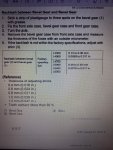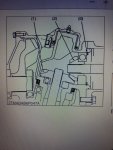One big problem I see with it being held in place with grease, is it being pushed out of position when the tooth sweeps into the valley between the teeth. To make this work I would almost think you would need to assemble it without turning anything. Then take it back apart, and measure the crush.
Yes I know I am kind of arguing against my idea, but that does not really matter. Finding a workable solution is the important thing.
Yes I know I am kind of arguing against my idea, but that does not really matter. Finding a workable solution is the important thing.




